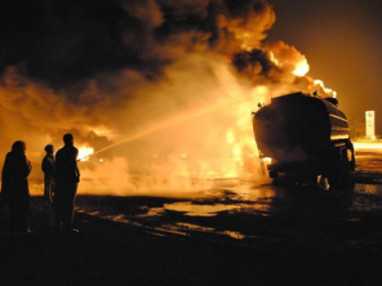Explosion and Fire Would Have Led to Tragedy
Szöveg: László Szűcs | 2012. július 13. 9:43Fortunately, the EOD technicians of the HDF Provincial Reconstruction Team (HUN PRT) and the Afghan National Security Forces (ANSF) were able to disarm the improvised explosive device (IED) that unknown perpetrators had emplaced on a tanker truck near Camp Pannonia in Pol-e Khomri, Afghanistan last weekend. As a result, no disaster occurred, although there were 16,000 liters of kerosene inside the tanker truck…
The EOD technicians have managed to prevent a terrible disaster, 2Lt. (Dipl. Eng.) Szilveszter Szél told us. The engineer officer of the HDF ‘Görgei Artúr’ NBC Area Control Center (NBC ACC) HDF Chemical and Nuclear Emergency Response Operative Department added that the tank of the truck would have been damaged if the IED had gone off.

Such an explosion and fire are highly dangerous, 2Lt. Szél added, as the different petroleum hydrocarbons can burn at temperatures of 600-800 degrees Celsius. Almost certainly, the power of the blast would have killed everybody in a radius of 90-100 meters. The people present in a radius of 160-180 meters would have suffered serious injuries, mostly with burst eardrums, while those standing in a radius of 300-320 meters would have suffered slight injuries. Not to mention the shrapnel effect, which can be another serious source of injury on the scene of a tanker truck explosion.
Moreover, extinguishing fuel fires is a difficult task, the officer of the HDF GA NBC ACC stressed. Fighting the fire directly with water jets is ineffective because petroleum hydrocarbons are lighter than water, so this kind of firefighting would lead to “kerosene islands" floating in flames on the surface of water. In cases like this, the most efficient method is to extinguish the fire with dry chemical extinguishers like powder or foam or with carbon dioxide.
(Our archive photos show tanker trucks set on fire in Afghanistan)